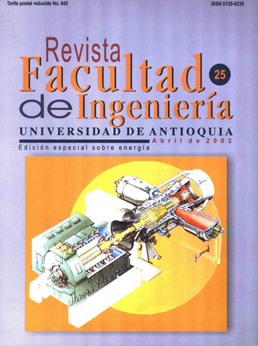Caracterización completa de sags de tensión: una alternativa para alcanzar la calidad de energía
DOI:
https://doi.org/10.17533/udea.redin.326349Keywords:
Sags, subtensiones, calidad de la energía, caterización.Abstract
Se presenta qué es la calidad de la energía y cómo ésta puede llegar a influir negativamente en los procesos de automatización, en qué consisten los sags de tensión, cuáles son los problemas que estos pueden ocasionar sobre la calidad de energía y la metodología que lleva a una caracterización completa del fenómeno sag. Una vez se identifican los problemas que presentan las diferentes cargas sensibles conectadas a un sistema de potencia, se procede a establecer que la causa es la mala calidad de la energía eléctrica suministrada a las cargas; entre las causas más comunes están los sags de tensión los cuales requieren ser caracterizados para disminuir su impacto negativo sobre los procesos industriales.Downloads
References
Dugan, R.C., McGranaghan, M.F., Beaty, H.W. Electrical Power Systems Quality. New York: McGraw-Hill. 1996.
IEEE Standar 1159 de 1995. Recommended Practice on Monitoring Electric Power Quality
IEEE Standar 493 de 1997. Recommended Practice for the Design of Reliable Industrial and Commercial Power Systems.
M. H .J. Bollen, Understanding power quality problems- volrage sags and interruptions, New York: IEEE Press. 2000.
W.H. Zapata, L. Cardona. Planeamiento y análisis de estudios de calidad de potencia eléctrica. Tesis Maestría. 1997.
IEEE Standar Draft P1346 de 1997. Electric Power System Compatibility with Electronic Process Equipment.
Downloads
Published
How to Cite
Issue
Section
License
Revista Facultad de Ingeniería, Universidad de Antioquia is licensed under the Creative Commons Attribution BY-NC-SA 4.0 license. https://creativecommons.org/licenses/by-nc-sa/4.0/deed.en
You are free to:
Share — copy and redistribute the material in any medium or format
Adapt — remix, transform, and build upon the material
Under the following terms:
Attribution — You must give appropriate credit, provide a link to the license, and indicate if changes were made. You may do so in any reasonable manner, but not in any way that suggests the licensor endorses you or your use.
NonCommercial — You may not use the material for commercial purposes.
ShareAlike — If you remix, transform, or build upon the material, you must distribute your contributions under the same license as the original.
The material published in the journal can be distributed, copied and exhibited by third parties if the respective credits are given to the journal. No commercial benefit can be obtained and derivative works must be under the same license terms as the original work.










 Twitter
Twitter